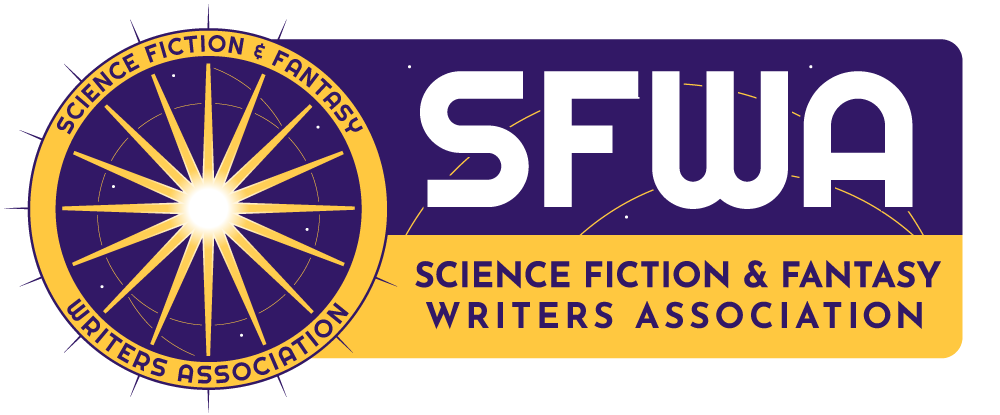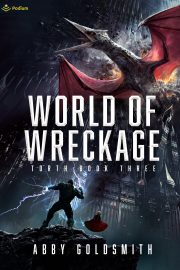THE INDIE FILES – Going Wide
By J. Scott Coatsworth
Note: All recommendations in this article are the opinions of the author and do not reflect an approval or endorsement by SFWA.
Two Paths to Indie Greatness
As an indie author, you have two basic choices for distribution:
- Go all-in on Amazon—eBooks, paperback, and Kindle Unlimited (KU).
- Or “go wide,” and get your books out into as many places as you can.
Going with Amazon is easy. All your books are in one place, the tools are decent (you can even use Amazon’s site for limited formatting and cover design), and you get a bump in their rankings just for being in Kindle Unlimited.
But there are downsides too. You’re at the whims of a single distributor, who can delete your book(s) or change the terms at any time. If you’re in KU, you’re not allowed to offer your book anywhere else, even as a freebie. And that KU bump? It works better for some books and authors than for others.
I started out with my books on Amazon only. The other venues just seemed too daunting. But with time, I figured them out, and there are a lot of great tools and sites now that weren’t available before.
When you go wide, there are five main vendors beyond Amazon:
- Apple
- Barnes & Noble (B&N)/Nook
- GooglePlay
- Kobo
- Ingram Spark (for bookstores and libraries)
There are a ton of smaller bookstores and distributors, but you can hit many of those through one of the main aggregator sites. I’m most familiar with these two:
Draft2Digital (D2D): These folks make creating eBooks easy. Even if you don’t have Vellum or Scrivner or Calibre to make them on your own PC/Mac, you can make decent-looking books fast and easy (and free) at D2D. You can use them to submit your book just about everywhere, including Amazon and libraries, but they do take a percentage cut for each sale.
Smashwords: I haven’t used them, but many of my author friends love them. They work similarly to D2D, with the added benefit of having their own sales site. They also run lots of sales. Editor’s Note (2/14/2022): Since this article was written, Draft2Digital has agreed to acquire Smashwords.
My Recipe for Wide Success
Here’s how I roll . . . okay, it’s a work in progress, and will doubtless change as the market shifts and new options become available. But it’s a starting point for folks who are new to the whole “going wide” thing:
Amazon: I distribute all of my standalone shorts for 90 days in KU, and then pull them off the market to roll into a collection at a later date. All of my novellas, novels, and collections are here too: in Kindle, paperback, and hardcover formats (novels only), but they’re NOT in KU because I wanted to be able to distribute them elsewhere as well.
Barnes & Noble/Kobo: I distribute my longer works to these two directly—after Amazon, they generally sell the most books, and seem to sell better when your books are listed through their own sites.
Draft2Digital: I use D2D for all other digital distribution. They’re easy to use, responsive when you have an issue, and you can put your books on sale at all vendors they work with in one place. For that reason alone, many authors decide to distribute to B&N and Kobo through D2D too, rather than directly—it’s a personal choice. They also run Books2Read, which offers free universal buy links, and you can print books through them, if you want.
Ingram Spark: This is the last piece of my “wide” strategy, and it’s for reaching bookstores and libraries. Of all the vendors on this list, Ingram is the only one that charges to upload a manuscript and charges to change the manuscript and/or cover, which can add up fast. But there’s a workaround—join the Independent Book Publishers Association, and you’ll get a code for five free uploads or changes a month.
The other piece to be aware of with Ingram Spark is that bookstore sales are returnable, and that can cost you. I talked at length with an Ingram sales manager, and he suggested setting your books to 53% discount, returnable/destroy (i.e., the bookstore can destroy them and get credit) for the U.S. and 48% discount, non-returnable for other countries. You might be tempted to make them fully returnable (i.e., can be sent back) but (a) you have no idea what condition they will be in and (b) you get stuck with the return postage too. One more thing–Ingram is much more likely to get your physical book into libraries than the other options.
That’s the gist of it. The Independent Authors Committee will be posting additional resources about going wide soon on the SFWA website. For more help and advice, I recommend the Wide for the Win Facebook group. This is a great group where you can ask questions, share info and get ideas for expanding your indie author empire.
You can also reach out to me with any questions about my own indie pub journey at scott@jscottcoatsworth.com.
 Scott lives with his husband Mark in a yellow bungalow in Sacramento. He was indoctrinated into fantasy and sci-fi by his mother at the tender age of nine. A Rainbow Award-winning author, he runs Liminal Fiction, Queer Sci Fi, QueeRomance Ink, and Other Worlds Ink with Mark, and is a full member of the Science Fiction and Fantasy Writers of America (SFWA) and chair of the organization’s Independent Authors Committee.
Scott lives with his husband Mark in a yellow bungalow in Sacramento. He was indoctrinated into fantasy and sci-fi by his mother at the tender age of nine. A Rainbow Award-winning author, he runs Liminal Fiction, Queer Sci Fi, QueeRomance Ink, and Other Worlds Ink with Mark, and is a full member of the Science Fiction and Fantasy Writers of America (SFWA) and chair of the organization’s Independent Authors Committee.


